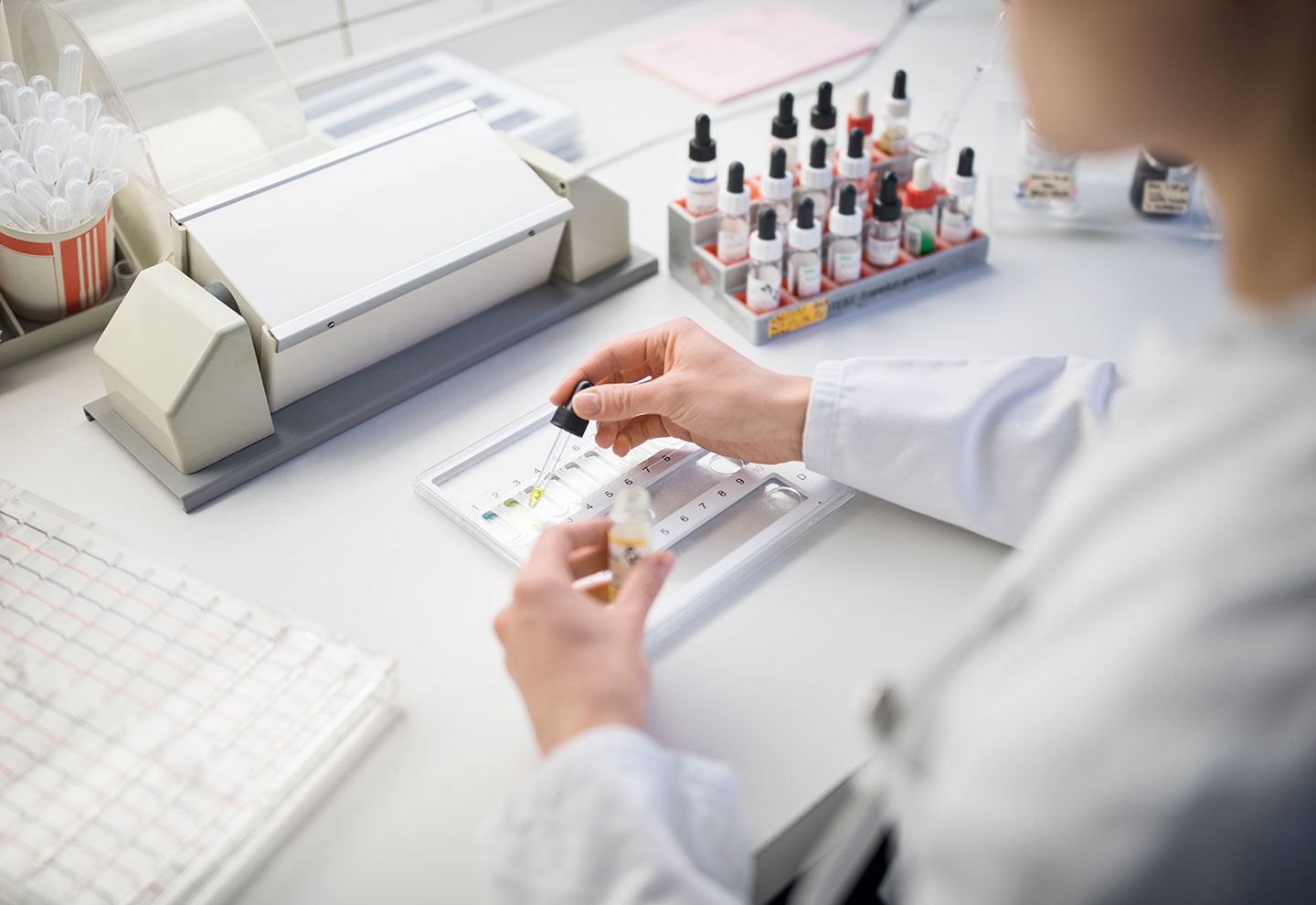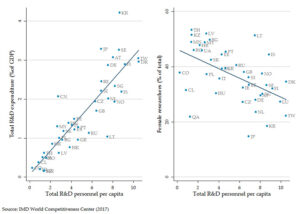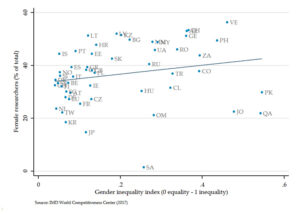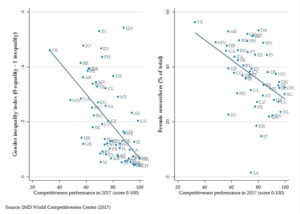
Gender inequality and R&D
Two years ago, the United Nations set a thought-provoking and aspiring agenda for sustainable development to be accomplished by 2030. Its target are seventeen goals related to broad social and economic issues ranging from poverty and hunger, to energy and climate change, and to gender equality and social justice. Purposely ambitious, the 2030 Agenda for Sustainable Development challenges all the countries to achieve a better and more inclusive environment for all by setting high standards. To emphasize the importance of science and gender equality for all, build awareness, facilitate discussions, and empower/inspire women and girls, the UN declared February 11 as the International Day of Women and Girls in Science.
IMD World Competitiveness Center recognizes the importance of the day and this issue of the Criterion of the Month will explore the relationship between the competitiveness ranking of economies and the number of women researchers.
I have been fortunate to know many creative and inspiring women scientists as family members, colleagues in universities and research centers, and students. Many of them are true role models for women and men alike. Thus, I had some preconceived notions about what I would be writing in this note. Alas, all changed when I started working with the IMD Competitiveness online dataset. Let me explain.
The number of researchers in a country depends in part on the total expenditures on R&D. The IMD World Competitiveness Dataset clearly exhibits this relationship. The left panel of Graph 1 indicates that the higher the total expenditures on R&D as a percent of a country’s GDP, the higher the total R&D personnel per capita, i.e., the full-time equivalent work per 1000 people. This positive relationship exhibits a correlation coefficient equal to 0.87.
However, when we plot the female researchers as a percent of the total number of researchers against the total R&D personnel, the relationship is negative with a correlation equal to 0.52. The right panel of Graph 1 presents this relationship. Different interpretations can explain this result; gender inequality is one of them.
Graph 1
Graph 2 presents the relationship between the percent of female researchers and the gender inequality index. Note that the higher the gender inequality index, the less gender parity the economy exhibits. The graph proposes that there is a slight positive relationship. That is, the more gender-unequal an economy is, the higher the percent of female researchers employed. Given that the correlation is low and equal to 0.21, it suggests that, at best, gender inequality is weakly related to the number of female researchers employed.
Graph 2
At this point, the obvious question is: how do economies characterized by high levels of gender inequality perform with respect to competitiveness? Graph 3 addresses the issues related to competitiveness. In the left panel of the graph, we present the relationship between competitiveness ranking and gender inequality. The negative relationship (with a correlation coefficient equal to -0.59) suggests that the high ranked economies with respect to competitiveness relate with higher levels of gender equality. In other words, economies that provide the necessary framework for sustainable value creation are exhibiting lower levels of gender inequality.
So, what is the record of these high competitiveness economies on employing female researchers? The right panel of Graph 3 shows a rather uneasy relationship. That is, the higher an economy with respect to competitiveness, the lower the percent of female researchers employed.
Graph 3
We are not the first to see this phenomenon. Various researchers have argued that the reason for this outcome may be that in the economies with a substantial need for researchers, the availability of female researchers is simply too low. A different type of gender inequality than the one measured above is at work here. Young women, has been suggested, may be discouraged at a young age to follow the path of science and research. Or, their expectations for potential employment are very low and thus prohibitive for making such a commitment.
From an economics point of view, research-oriented economies tend to exhibit high demand for researchers, and therefore, offer high salaries, implementing for such appealing positions the gender pattern we observe.
In either case, letting women know about the intriguing undertakings of and opportunities for a scientific researcher as well as empowering women to make such a choice is at the heart of celebrating the International Day of Women and Girls in Science. Societies do not know from how many Marie Curies or Jane Goodalls we would have benefitted had we used a different narrative.
Research Information & Knowledge Hub for additional information on IMD publications
This note presents an integrated model for organizational culture transformation, addressing common pitfalls and barriers to successful change. It outlines seven key elements: (1) defining the target culture, (2) clarifying leadership’s role, (3) ...
Alex Reinhardt was brought in to turn around a renewable-energy company that had been on the verge of bankruptcy until the German government bailed it out. After he fainted from overwork and burnout and had to take a medical leave, the board appoi...
in I by IMD
Research Information & Knowledge Hub for additional information on IMD publications
10 January 2025
Research Information & Knowledge Hub for additional information on IMD publications
Research Information & Knowledge Hub for additional information on IMD publications
Research Information & Knowledge Hub for additional information on IMD publications
in I by IMD
Research Information & Knowledge Hub for additional information on IMD publications
in I by IMD 8 January 2025
Research Information & Knowledge Hub for additional information on IMD publications
Research Information & Knowledge Hub for additional information on IMD publications
in I by IMD
Research Information & Knowledge Hub for additional information on IMD publications
Research Information & Knowledge Hub for additional information on IMD publications
Research Information & Knowledge Hub for additional information on IMD publications









